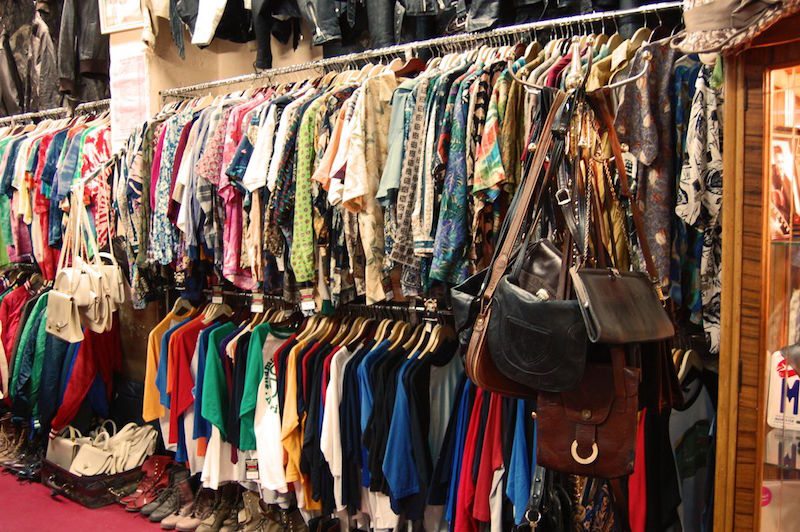If you’re a Fashion Lover and you’re serious about caring for our Planet, this is for you!
It used to be that there were 2 cycles in the fashion calendar — Spring/Summer and Fall/Winter, but now with fast fashion, there can be as many as 50+ micro-seasons. That means new stuff going on racks for us to purchase every week. Yet it’s cheap and poorly made, so we buy a lot of it then dump it because it’s not made to last, or we simply don’t care about it. Between 2000 and 2014, global fashion consumption grew by 60%, but consumers now keep garments half as long. (Source: World Resources Institute, citing The True Cost and Mckinsey). Many of us have become addicts, craving the dopamine thrill of novelty. According to a 2017 study called ‘After the Binge, the Hangover’ by Greenpeace, 66% of shoppers surveyed had lost the buzz of a new purchase in as little as just a few moments, to one day. Our insatiable desire for more and cheaper clothes is one of the reasons that the fashion industry has become the 2nd worst for overall pollution after fossil fuels, and responsible for 5% of the world’s GHG emissions (Source: EcoSessions podcast quoting Nate Aden from the World Resources Institute).
Most of us can easily list off the 3Rs — Reduce, Reuse, Recycle — as they’ve been part of school curriculum for over 3 decades now, but our global fashion consumption problem is so off the charts, it’s time for a few more Rs — Research, Repurpose, Repair & Rent!
We’ve come up with 3 pointers for each category, but we know there’s so many more. We’d love it if you tagged us on Instagram with your 7Rs wardrobe experiments and learning @fashiontakesaction and adding the tag #7RsWardrobe!
1) Reduce
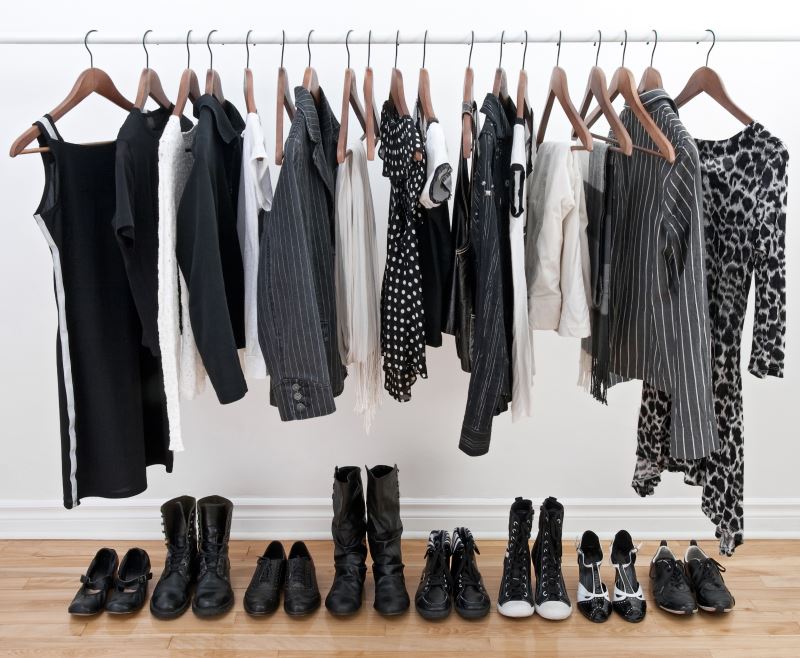
- The life of our clothes could be extended much, much longer if we reduced the amount of machine washing and drying (and we’d reduce our water and energy consumption, too).
- The most important thing is to massively slow down our fashion consumption. Try shopping for VALUE instead of COST. Investment pieces that can be worn through the seasons for many years have a cost per wear that makes them more inexpensive than fast fashion! The value of a garment also increases when it has an emotional appeal of some kind (e.g. “this was such a good vintage find”, “I love this design and saved my money for it”, or remembering special circumstances around the purchase, such as travel.)
- If you crave variety, use your creativity to reduce your need for new outfits. Style a smaller capsule wardrobe multiple different ways by “shopping your closet” with different pairings, layers and accessories. Check out www.stylebee.ca for a good resource.
2) Reuse
- Be a proud Outfit Repeater! Use your creativity to wear an item 30 times or more. Follow the #30wears tag on social media to find other people who are striving for the same thing.
- Shop thrift, consignment and vintage. Thrift stores are simply second-hand clothing markets with very little curation, but you can often find treasure. Consignment shops are shops where people sell their own clothes and the shop owner keeps a profit as well. They may sell fast fashion brands or high-end. Vintage clothing shops sell items from specific eras, usually high-quality styles two-to-three decades old.
- There are many ways to exchange clothes without money e.g. hand-me-downs from siblings or cousins, attending swaps, or using a bartering app, such as Bunz, where you can get a new pair of leather boots in exchange for someone’s house plant, books, or unwanted gadget.
3) Recycle

Many textiles can be recycled — even your undies and holey socks. They can go in the donation bin along with household textiles and clean, dry garments, shoes and accessories. (In this context, “recycle” means the breaking down into raw materials, such as fibre or shreds, and being made into something else.)
The more we divert textiles from landfill, the more we can reuse, repair and recycle materials, and the more we can decrease our GHG emissions which are creating climate change. For every 1 kg of textiles that decay in landfill, there are 4 kg of carbon dioxide emitted.
- More and more fashion brands, such as Zara, Mango and H&M, have take back programs in their stores. Bring in your unwanted clothes—even from other brands. (Often there is a discount given towards your next purchase, so use with your conscious-consumer radar on.)
- Look for garments and shoes made from recycled textiles and ocean plastic waste when you shop. Levis, H&M, Matt & Nat, G-Star Raw and Adidas all have recycled content options.
- When shopping, be conscious of packaging and hang-tags that are recycled or recyclable. Better yet, refuse to purchase garments that are over-packaged and definitely refuse a bag with your purchase, as most cannot easily be recycled.
N.B. There’s a difference between clothing made from recycled materials and clothing that can itself be recycled. To learn about the difference watch “How Plastic Bottles are Recycled into Polyester”).
Making new materials from recycled clothing is a whole other process, complicated by the fact that most of our garments are made from mixed fibres (i.e. natural and synthetic).
New technology is coming, but at this point only pure fibres can easily be recycled into new textiles (they can be shredded and recycled into car-seat stuffing and home insulation, though).
4) Research

- Use Instagram and Facebook to help you find Maker Fairs, local independent retailers and brands that you’d like to support. INLAND, the One of a Kind Show, and Etsy are all venues to find makers who produce locally and in smaller batches (which reduces waste and carbon footprint from fewer kilometres travelled.)
- Research the big global brands you want to support and the brands you don’t. Use an app such as Good On You, a blog that does regular roundups such as The Good Trade, or search for a brand’s annual sustainability report to help you make your decision.
- 70% of clothes we throw away have damage such as colour fading, stains or shrinking. This could be avoided with better laundering and understanding of care labels. Research ways to remove stains, proper laundering techniques for textiles, how to iron (so you can avoid the expense and toxicity of dry cleaning), or how to dry your clothes to use minimal energy. All of these will help your loved clothes last longer.
5) Repurpose
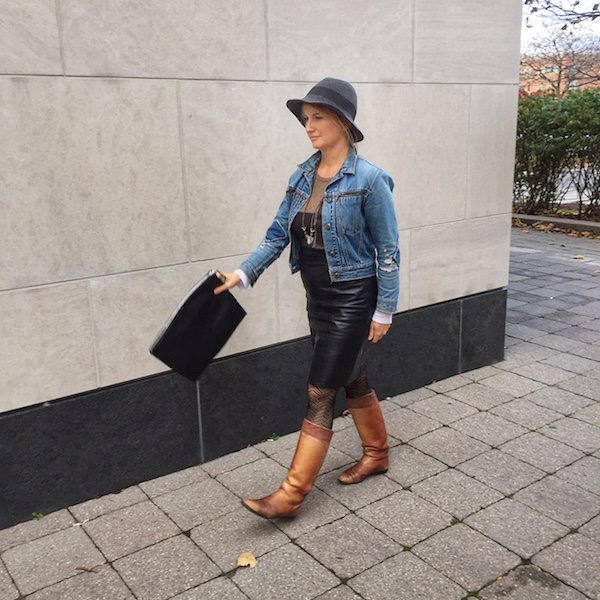
- Unused or ripped leather can be turned into clutches, bags and totes. T-shirts can be repurposed into totes, pillow cases, necklaces, and even braided carpets!
- Old wool sweater scraps can be mixed with new wool roving and made into wool dryer balls. (These will subsequently reduce drying time by 50%!)
- Check out brands such as Preloved and Reformation that use roll-ends and secondhand clothing to make new items. Patagonia Worn Wear and Eileen Fisher Renew are brand initiatives to repurpose, recondition and resell the companies’ own quality garments.
6) Repair
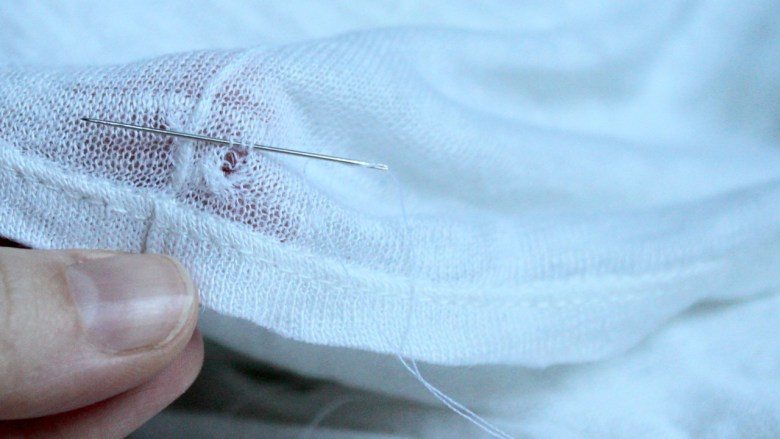
Many clothes and shoes with rips or holes are disposed of rather than donated, but with a little DIY or expert skill, there could be many more wears left in your faves.
- Learn to sew a button on by hand, fix a fallen hem, or patch a rip in your pants. Watch a tutorial online, or take a course at a community sewing hub to learn your way around a sewing machine.
- Why hide your repairs? Take up visible mending; it’s a way to turn holes in sweaters and rips in pants into beautiful and colourful stitching embellishments. Not your speed? Sew a premade embroidery patch over it. You can even design your own!
- If your shoes are leather, or your garment needs professional help, cobblers and tailors can be your wardrobe’s new best friend.
7) Rent
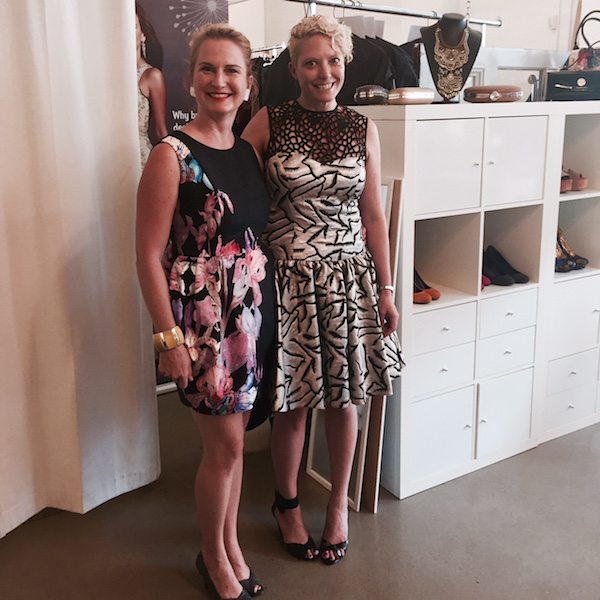
In some ways, this R is not too different than Reuse, but we want to draw attention to an emerging business model which is called the “sharing economy”. We have stuff in our closet that’s not being used, so why can’t someone else use it? Here are a few variations on Uber or AirBnB for clothing:
- Have investment items in your closet that you love, but don’t wear often, or anymore? Why not rent them out through a service such as Boro? Make some money, and get your pieces back again if you have an occasion to wear them.
- Got a special occasion and want to dazzle with a dress no one has seen you in before, but don’t want the $400 bill? Rent your dress via Rent Frock Repeat, Studio Fitzroy, or a similar company in your city.
- Wish you could rent your entire wardrobe and send it back once you’re jones-ing for a fresh infusion of pieces? The Lena Fashion Library in Holland, and The Mr Collection in the U.S. are two wardrobe rental subscription services for everyday work and leisure. If you’re a variety addict who wants to be more sustainable but cringes at investing in a slow fashion capsule, this may be a great way to decrease your fashion consumption while still getting your fix of fresh styles.
